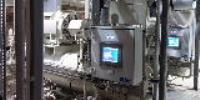 Add My Company
Add My Company
Sign In
The Low GWP Challenge
24-02-2019

There has been a wealth of advice in refrigeration on the need to make the switch to low GWP refrigerants to meet the F-Gas phasedowns. With refrigeration playing such a key role in the food processing industry some producers and suppliers have taken the message on board but some have been left with big decisions to make.
Unless you are a refrigeration expert, it’s not easy to be sure you are making the right choice for your system. This year’s 37% cut in the quota for the production of virgin refrigerants is having a major affect on supplies. Prices for the go-to refrigerant R404A have risen steeply as the amount of virgin refrigerant available on the market is reduced.
But if you are working with large, low temperature systems like those found in food processing there are no easy answers. Flooded evaporators are more likely to be employed in larger systems where in the past single component gases like the now-banned R12 and R22 were used. They were relatively easy to install and maintain. R134A for high temperature applications, and R507 for medium and low temperature jobs, offered a way forward but their high GWP means that these HFC blends have a short shelf life.
In this respect the new blended low GWP refrigerants offer no real alternative for medium and low temperature applications because they can be difficult to manage.
Zeotropic refrigerants may provide a solution in the long term but at present there are no low GWP HFC alternatives for low temperature applications in the industrial sector where flooded evaporators are in use.
Hydrocarbons like propane and propylene are more expensive to install, with flameproof equipment needed, and you have the added responsibilities of the ATEX regulations to consider.
The new class of low GWP HFO refrigerants like R1234ZE and R1234YF are still in the early stages of development.
This brings me to ammonia – a good choice for large systems operating on an industrial scale. It is a versatile, effective and efficient natural refrigerant which does not deplete the ozone layer and has excellent thermodynamic qualities, providing a wide temperature range.
This natural refrigerant has a fine safety record and is used in many applications in the meat, poultry and dairy industries.
For more information on The Low GWP Challenge talk to J and E Hall Ltd
Enquire Now
List your company on FindTheNeedle.

